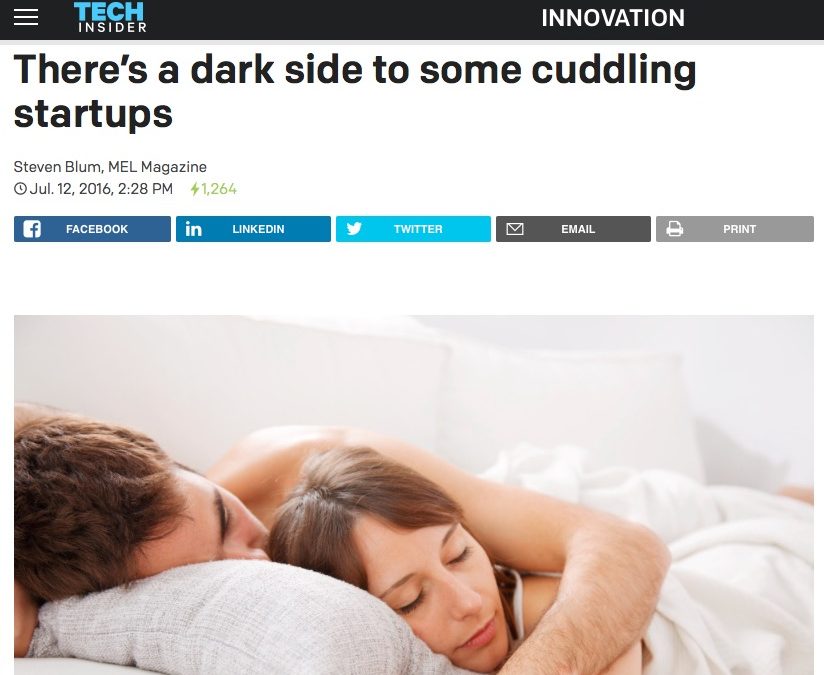When writer, Steven Blum, contacted me because he wanted to do an article about professional cuddling, I was delighted. His focus was on the economics of cuddling and I spent a good hour on the phone with him sharing my successes and challenges with the cuddling business.
As Steven continued his research, he alerted me to a cuddling service that saddened and disappointed me. It sexualized the women on the site and had a porn vibe – even though the service on the site professed to be nonsexual. It made me concerned for the contractors – the women – who worked for the site.
Steven asked me to weigh in on the subject. I spent at least forty minutes struggling with a characteristically diplomatic response which I’ll include below. I’m proud of what I wrote. Now that I’ve seen the article, I have to smile at Samantha Hess’ response. (Samantha Hess is the Owner of Cuddle Up to Me in Portland.) “It’s (excuse my language) fucked up,” she said via email. I appreciate her candor, and I bet it didn’t take her forty minutes to say it!
So here’s what I said:
Hi Steven,
Thanks for letting me know about Cuddle Time. I wasn’t aware of them.
Once I looked at their site I was really disappointed to see a lot of sexualized images of young women. It’s not a direction that I will be taking in my business. And yet it’s obviously working for them and for good reason.
Their site is pretty smart -business wise- in that it gives the clients – straight men – a pat on the back for using their services. Rather than being something to be embarrassed of, the site makes you feel like you’re shopping for porn or an escort and therefore it feels comfortable for their target market.
The angle I will be taking is to compare our services to a luxury experience – like time at a spa. Their marketing strategy is proven – mine is not. But mine feels more in line with my values.
The bigger picture macro situation here is that the easiest way to help men get their needs for touch met is by packaging the service using the objectification of women. It feels familiar and comfortable and that’s the bummer place that our culture is in right now.
My biggest concern is that Cuddle Time creates a context that objectifies the professional cuddlers. Once a client is in private with their professional cuddler, I’m imagining that some clients may feel emboldened to try to push boundaries in ways that I or the cuddle professionals who work with me will never have to deal with.
Beyond that concern, I am guessing that Cuddle Time is helping hundreds of men find nourishment and connection and that is a fantastic thing.
Does it blur the distinction between cuddling and sexual services – yes, with it’s sexualized imagery and objectifying language. It is unhelpful? That’s a complicated question. They’ve found a recipe for the secret sauce of helping bring this work into the mainstream. I hope like hell I can find a different recipe that brings – what feels to me – more humanity and empowerment to everyone involved.
Thanks for inviting me to weigh in.
And here’s the article on the TechInsider site.
What do you think about how cuddle services are marketed?

